Last Updated on February 9, 2021
In 2011, in the month of October, we spent 21 days in the north-eastern states of Assam, Arunachal Pradesh, and Meghalaya. I am publishing a few posts this October to mark the anniversary of our travels on those lesser trodden paths. It is a year since we traveled to the north-east, but there is not a single day that we are not reminded of the beauty and the magic of the place. This post is about the beautiful road trip we took along the Lohit River to a quaint village on the easternmost part of India called Walong…the road to Walong.
**********************************************************************
An early start from Tezu
Leaving behind the shaded avenues and the spacious government quarters, we took the road out of Tezu to Demwe. It was only past 7.00 am, but was warm enough for us to throw away our sweaters. We passed the road that wound up to the Tafragam village and passed hordes of school girls on cycles making their way up to Vivekananda Kendra Vidyalaya in Tafragam.
Just before the Demwe bridge, we passed a map of Arunachal Pradesh that had been elaborately painted on to a wall by the Border Roads also known as GREF in these areas. Before our journey to Arunachal we had scoured the net and book stalls for maps, but never did we come across such a neat map. The map showed the distances from Demwe to most of the major villages and towns across Arunachal Pradesh. According to the map, we had 190 km more to cover to reach our destination – Walong.
Further up the road to Walong, another sign reminded us that the ‘hill sector’ had started. We reached a Y-junction. Here the NH 37 coming up from Chowkham via Parasuramkund joins in on the journey. We climbed up the road, moved ahead of the Hawa pass and reached the Hawa army camp.
The Lohit view
Just above the army camp was a viewpoint.
We got down from our Scorpio to spend some time at the viewpoint. The views from here were amazing. The panoramic view of the magnificent Lohit valley spread across our eyes. Aptly named the Lohit viewpoint, Jayantoda said that this place was best known for the sunset and sunrise. The Lohit River lay there glistening in the early sunlight.
There was very little water in the river and the white sand banks stood out in contrast with the numerous shallow water channels. Further left we could also catch a glimpse of the Parasuramkund and the newly built bridge across the river. That bridge led to Wakro, our home away from home.
Lohit – Luit – ‘the river of blood’
Lohit is the farthest easternmost tributary of Brahmaputra. The Lohit River originates from the Tirap Phasi ranges in Eastern Tibet and enters India through Kibithu, a small village lying at the India-China border. After entering India, the river traverses through the Mishmi hills of the Anjaw and Lohit district and joins the Brahmaputra after travelling for about 200 km through the red laterite soils of the Lohit basin, thus giving it the name – the ‘river of blood’. In Assam, Lohit is known as Luit. On our journey along the road to Walong, we would be tracing the Lohit River back to Kibithu where it enters into the territory of India.
On the road to Walong
From here on, the road to Walong snakes up and there is not much for a company other than the high-ceilinged mountains and the feisty Lohit river playing a constant consort all the way up to Walong and beyond. And there is a good 200 km of near empty road ahead all the way to our destination. Occasionally, we came across the odd jeep – this is not classic car territory – or a bike. Tourists are a rarity in these parts and most of the Sumos and Scorpios are busy ferrying locals from the many far-flung villages higher up to Tezu and Tinsukia and back. We were ourselves in good hands with both our Scorpio and its driver, Jayantoda, as seasoned as the other.
Army rules
The one other traffic of note was the small convoys of Army trucks that were, customarily, given the right of way. Whenever an army truck came against us Jayantoda would ask the driver at the head of the convoy, with a gesture of his hand, the number of trucks in the convoy. And the army driver would, in turn, gesture with his hand the number of trucks in the convoy.
We crossed the ‘Udayak Pass’ and then came to a small shrine that was built by the roadside. A place where accidents occurred frequently, the locals had built this shrine so that the travellers could pay respect to all the Gods and Goddesses before commencing on their journey to the easternmost part of the northeast.
We prayed and paid our respects, to all those Gods and all those nameless fellow travellers who had lost their lives, for our safe journey. By 9 am we rolled into a small village, Salangam.
Jayantoda had planned our breakfast here. And moreover, the next big village was Hayuliang, 2 hours and 46 km away. After a simple breakfast of ‘roti-dal-onion-chilly’, we were on the road again.
Meeting Mithun
There was something very odd about the vegetation in these areas. Every tree, plant, shrub, and undergrowth looked as if they were on steroids. The ferns looked liked palm trees and the humble bamboo thickets were giant in size.
Were the cattle on steroids as well? Right in front of us stood a fat cow-buffalo hybrid species. Our Scorpio came to a sudden halt and Jayantoda with all his enthusiasm pointed out and said ‘Mithun’.
I was not expecting Mithun-da, of all people, to groove to the tunes of ‘Disco Dancer’ in a remote village in Anjaw district. Well, our Mithun was munching away on a green patch on the roadside, totally unaware of its newfound attention.
The Mithun are reared for meat and are highly preferred among the tribal people of northeast. Mithun is also used as a ceremonial animal in sacred traditional functions and as a gift to the bride in weddings thus playing an important role in the social and cultural life of the tribal people of northeast.
Hayuliang
Leaving our Mithun behind, we drove further. Other than Hawai, the district headquarters of Anjaw district,
Hayuliang is the biggest town on the road to Walong. We stopped at a small fuel station at Khupa, near Hayuliang, to tank up our vehicle for the remaining 100 km drive up to Walong.
All along, Lohit was playing a loyal companion. Gushing loudly at times showing its true blue colours, turning a more paler turquoise on a few occasions, changing to a more greener hue and gelling well with the verdant surroundings, and on a very few occurrences turning to a more slaty black in the many whirlpools.
On the way we came across a lot of construction workers sweating themselves, toiling in the sun, trying to pave a better road for travellers like us.
The Indian Hawaii
We made a pit stop near a metal bridge in Hawai. The district headquarters of the newly created Anjaw District, Hawai is situated on a hill across the Lohit River. Promising ourselves that we would visit Hawai on our way back from Walong, we took a few snaps and continued on our journey to Walong.
Walong was about 50 km from Hawai. Along the road to Walong, we got to get a glimpse of the beautiful bridges of Arunachal. A lot of the bridges were sturdy metal ones, built by the Indian army and Border roads organisation. Other than these nondescript bridges, the many hanging bridges across the charging Lohit river are bound to catch one’s attention. We stopped at a couple and tested our guts and our resolve. Some of the hanging bridges we crossed were made of bamboo and wooden planks, apart from the metal cables that run along the side and connect it to the ends.
Leaving behind my acrophobic partner with Jayantoda, I tried crossing a fairly long hanging bridge. The floor of the bridge was creaking under my clumsy step and the entire bridge swinging in tandem. Below, through the gaps of missing wood planks, the mighty turquoise Lohit river was gushing and rushing loudly, leaving me breathless. And then a couple of school children came running along the bridge looking queerly at me and perhaps amused at my discomfort.
Well, practice does make one perfect. But what about fear of heights? Must be non-existent in these places.
Walong
We drove into Walong by 3 pm, but it looked as if it was just before sundown. In the muted evening sun, however, there was enough of the town to catch a glimpse of.
The first thing you would notice here is the silence. Other than the odd shout from a bunch of kids playing nearby, all we could hear was the unrestrained gurgle of the Lohit in its mad rush from the Chinese mountains up above. The small town of Walong is all about the settlement on either side for a few hundred metres. There are shops in a row on one side of the road and houses complete the line up on the other. The smattering of small structures apart, the only major signs of habitation is the large army base here.
The road to Walong splits here; one leads up towards the side of the hills and to the Circuit House above, while the other goes further up to Kaho and Kibithu. We were lucky to get a booking here for there is virtually no accommodation option otherwise. For the lone stay option, the Circuit House is delightfully good. The location, for one, couldn’t be better. From the vantage point above the Walong town, the rooms looked out on to the mountain peaks all around and the valley below.
In the distance, by its banks, the army settlement was a constant reminder of how sensitive a place it still was, despite all its serenity and beauty. As with all circuit houses, the warmth of the staff and the homely taste of the food is what sticks with you. But unlike many, it was uncharacteristically clean with spacious well-appointed rooms with an uninterrupted power supply!
Exploring Walong
We had not had our lunch, so we went in search of food, as the kitchen was not yet open at the guest house. After buying the staple food of bread, jam, and butter, we walked along the sparsely populated main road of Walong – a few shops were still open, a PCO, a provisional store, a tea stall and a barber shop. Men and women were seen huddled together around chatting, kids played in groups and the sun kept going down.
On the bank of the river, the army quarters spread out, the helipad standing out in contrast with the decorum of the camp. We climbed back to the circuit house through a shortcut from the market, climbing up a steep flight of stone steps. As the last rays of the sun lit up the mountains and the river, the first electrical lights of Walong came on.
All night long, the chirping of the crickets and the gush of the Lohit completed the background score. We had a busy day tomorrow. For we had to pay our respects at the War Memorial, visit the hot springs at Tilam and travel on the easternmost road in India and visit the villages of Kaho and Kibithu located further ahead near the border. Before we knew, sleep and fatigue caught up and we dozed off.


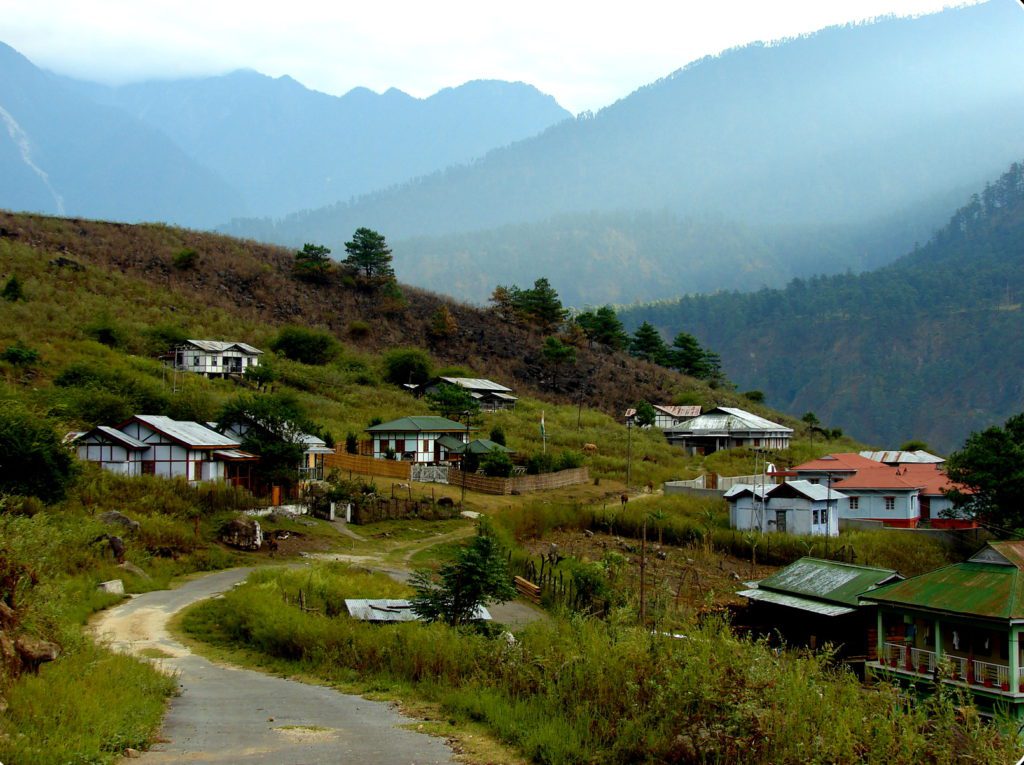
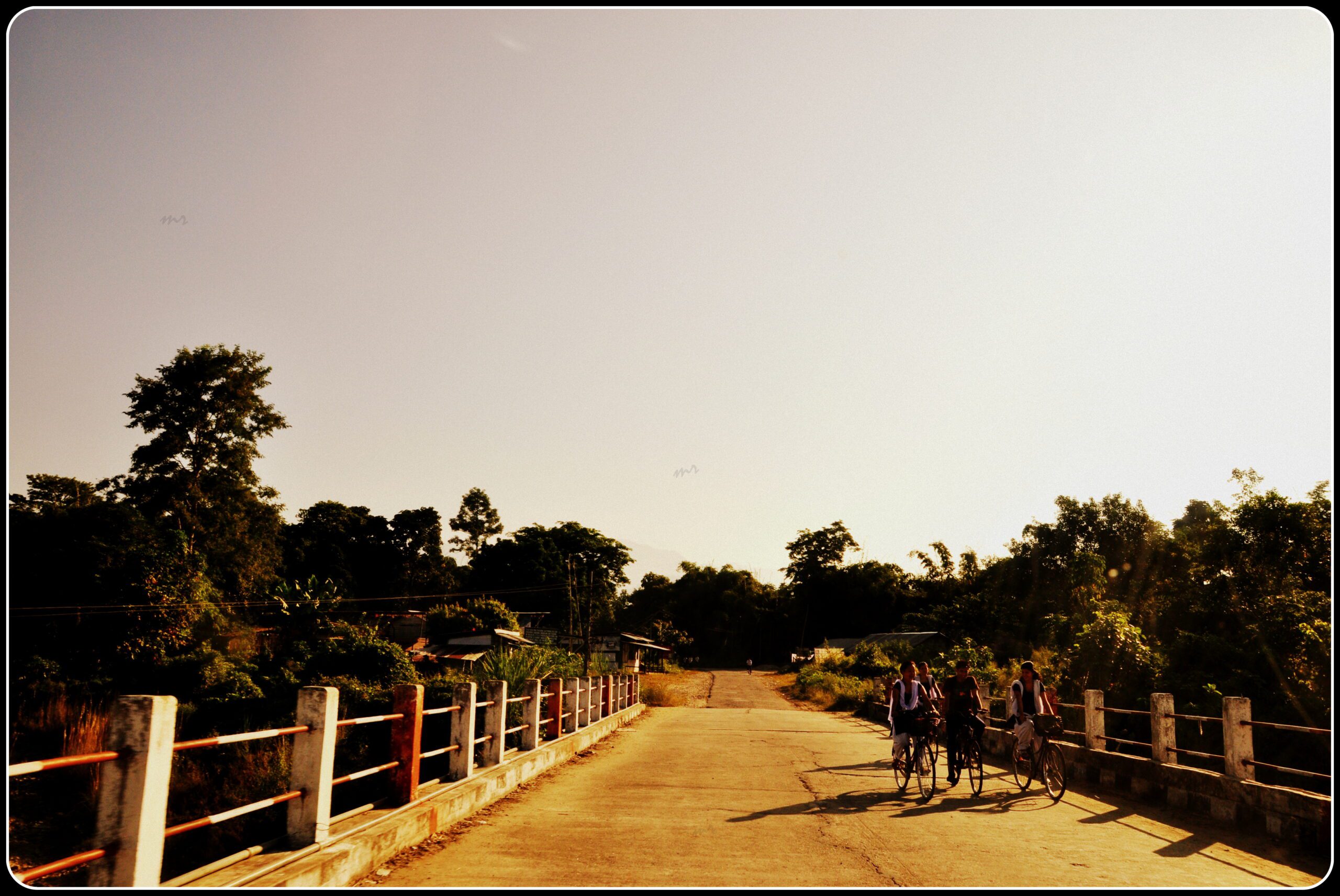
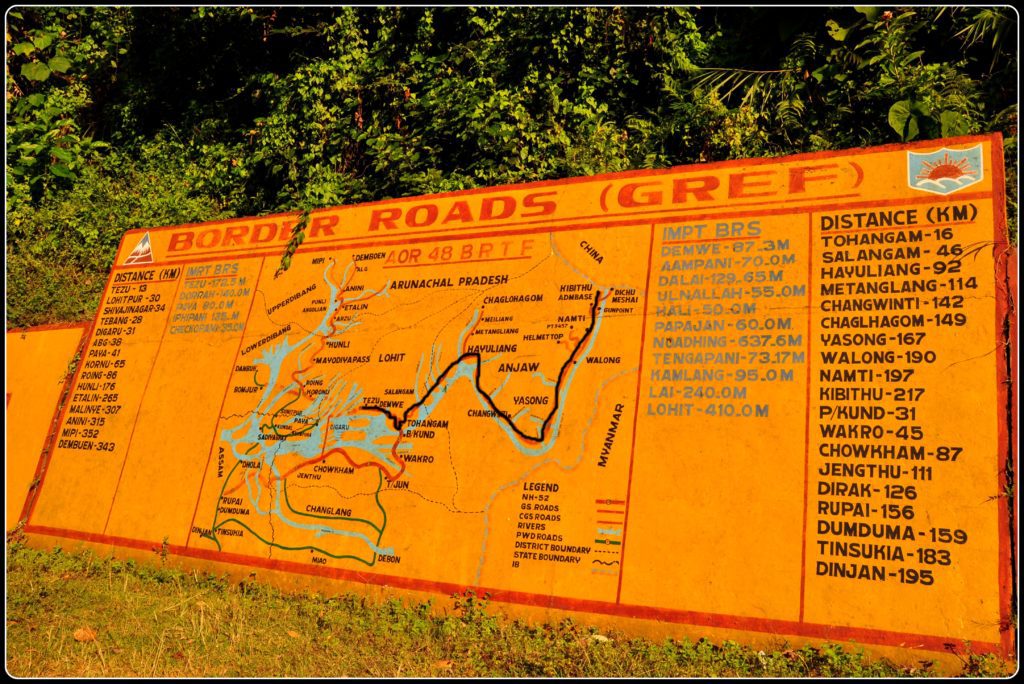
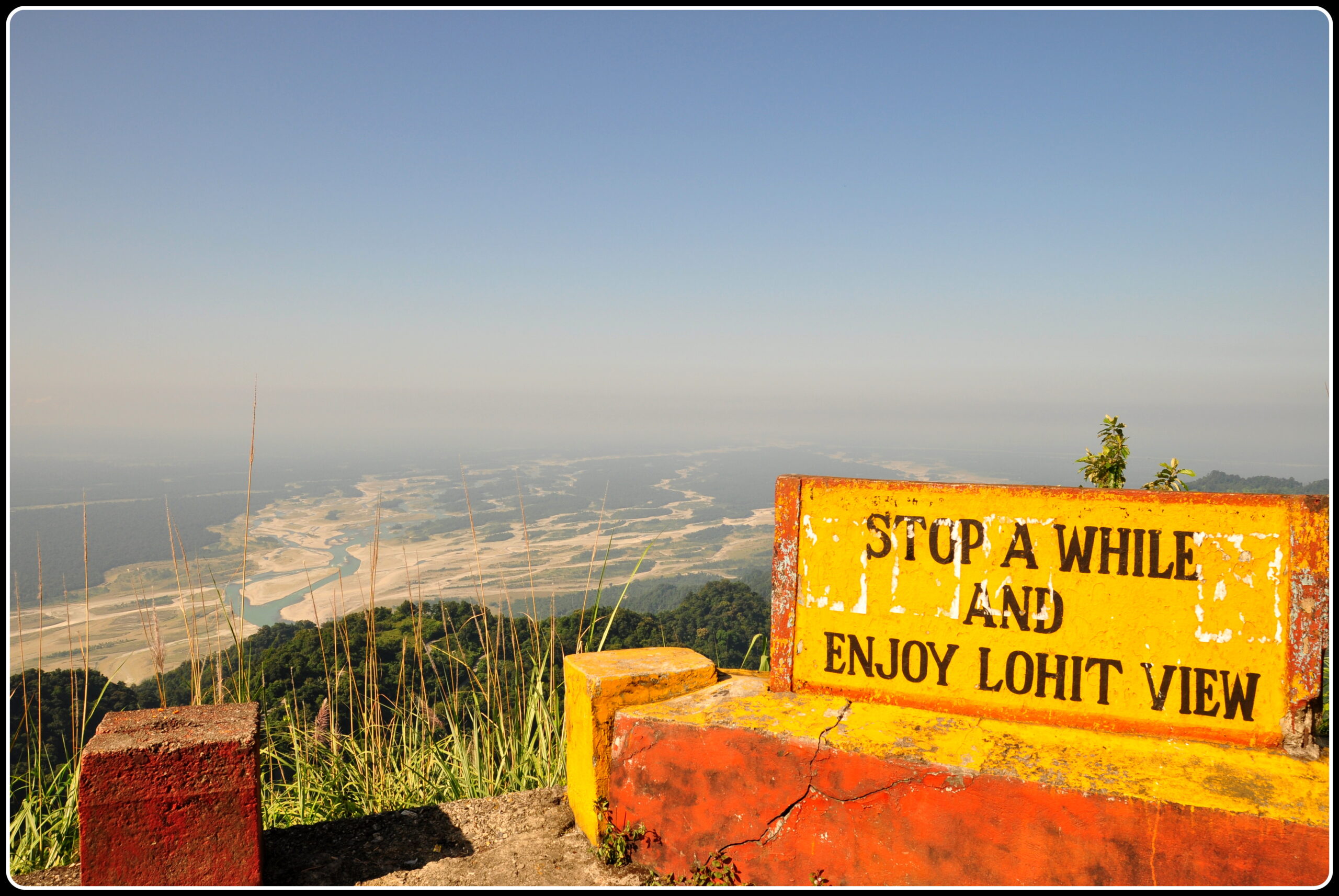
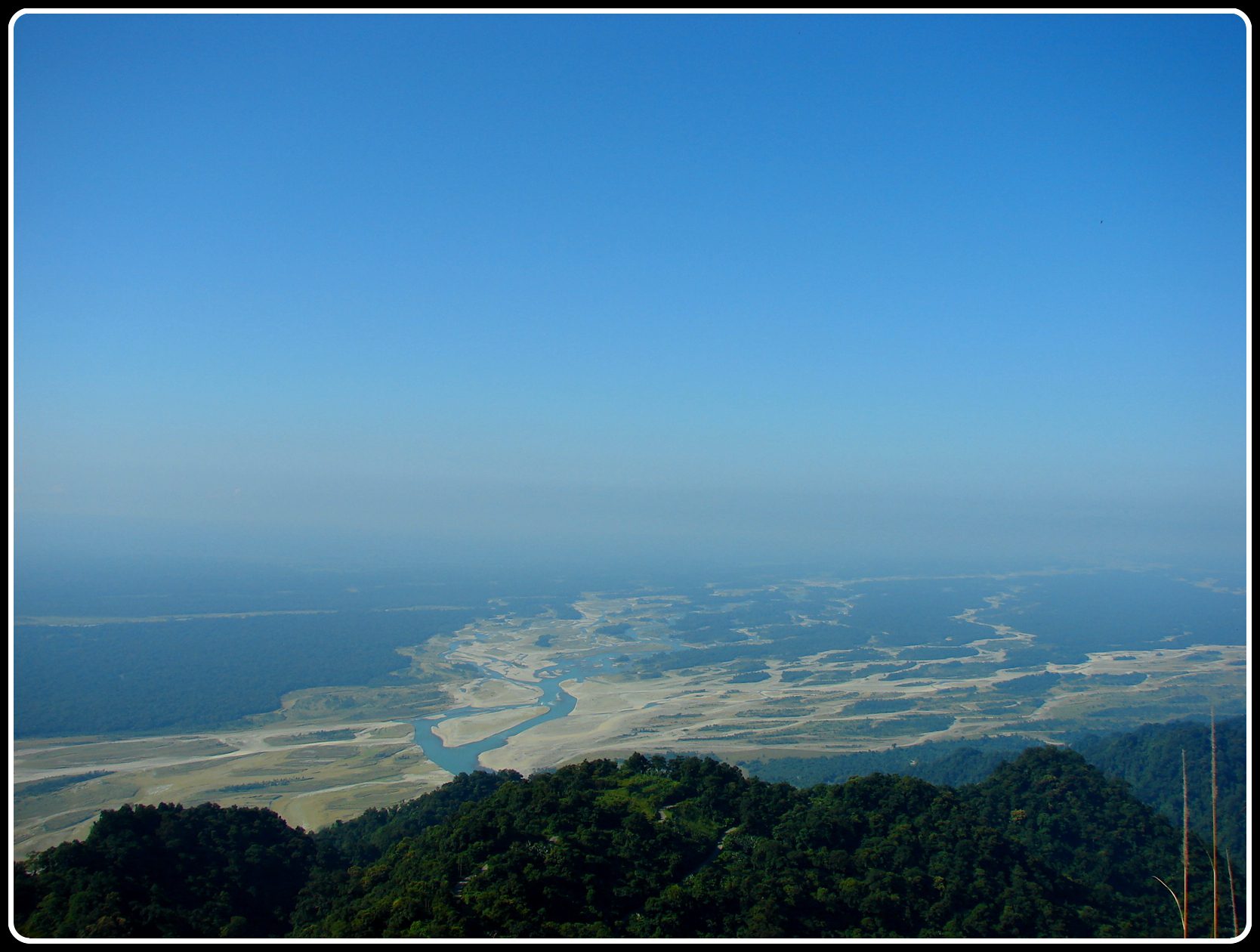
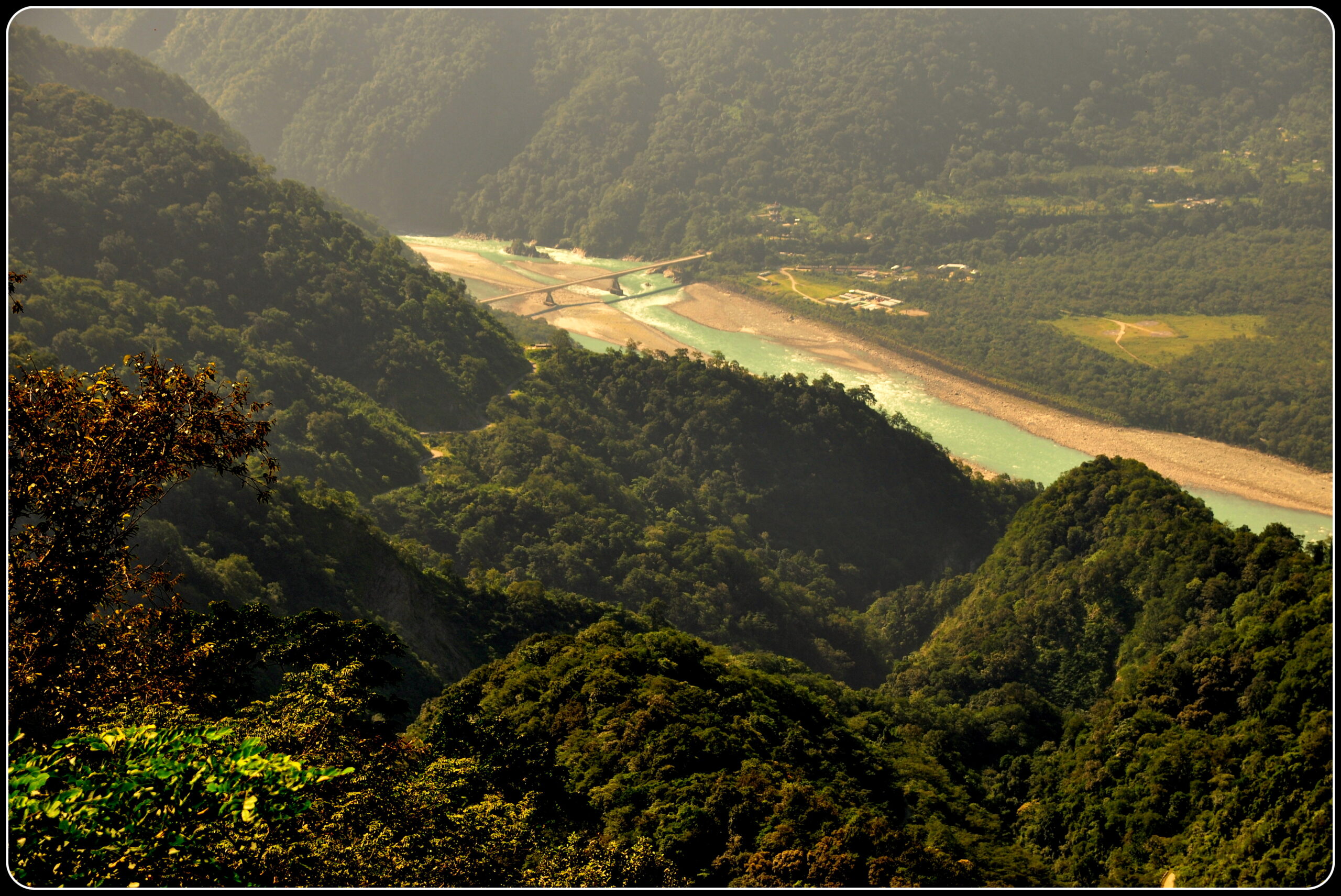
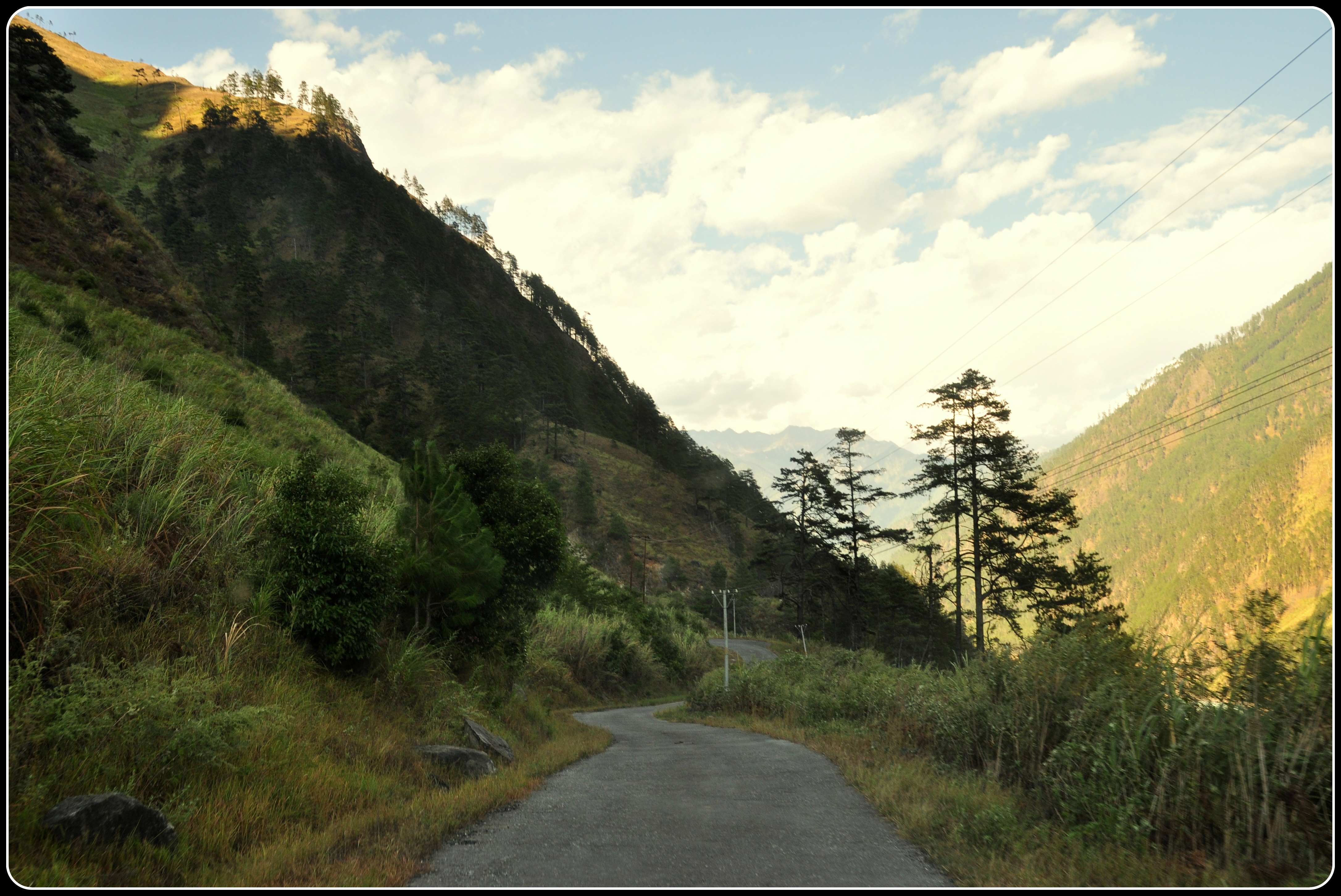
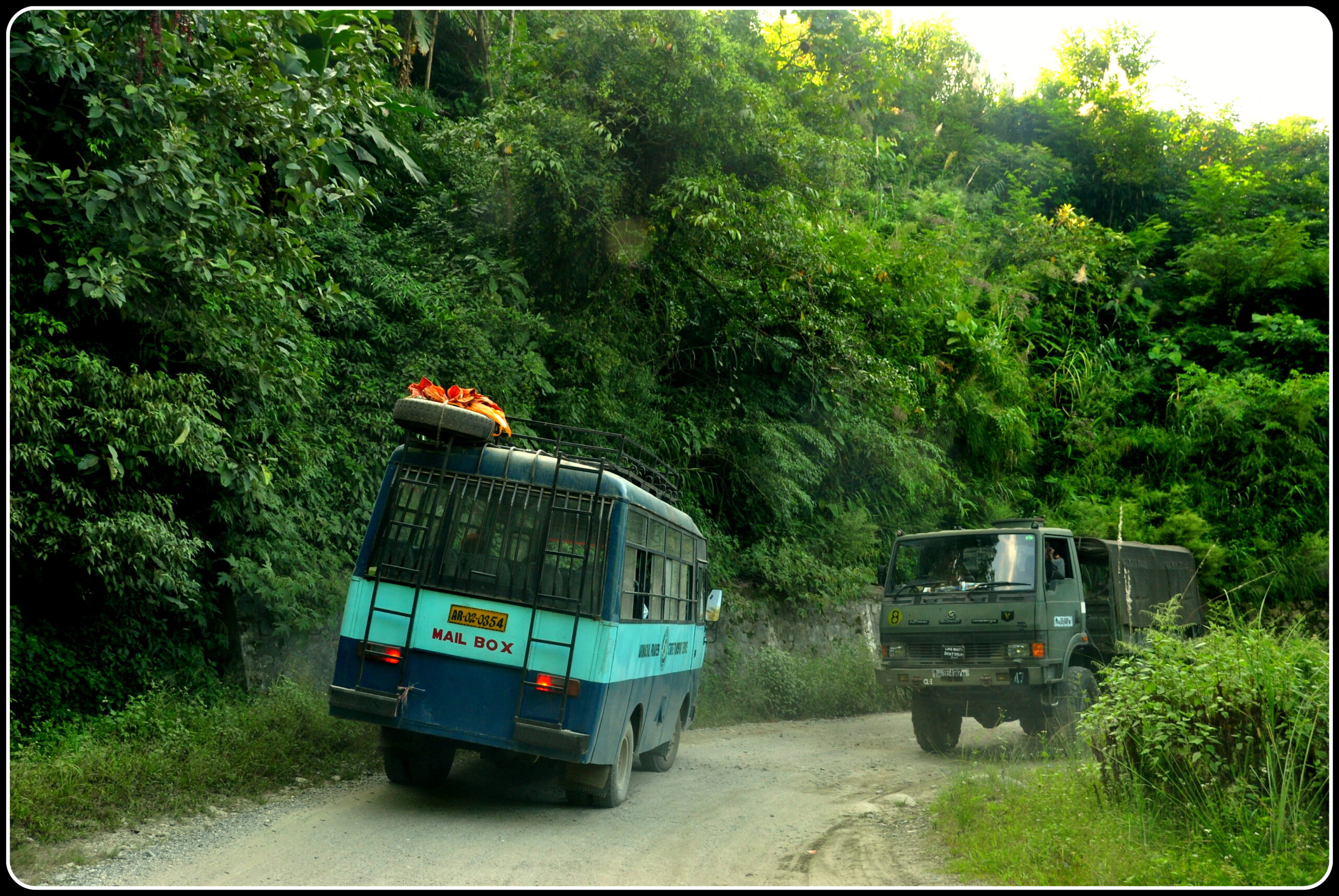
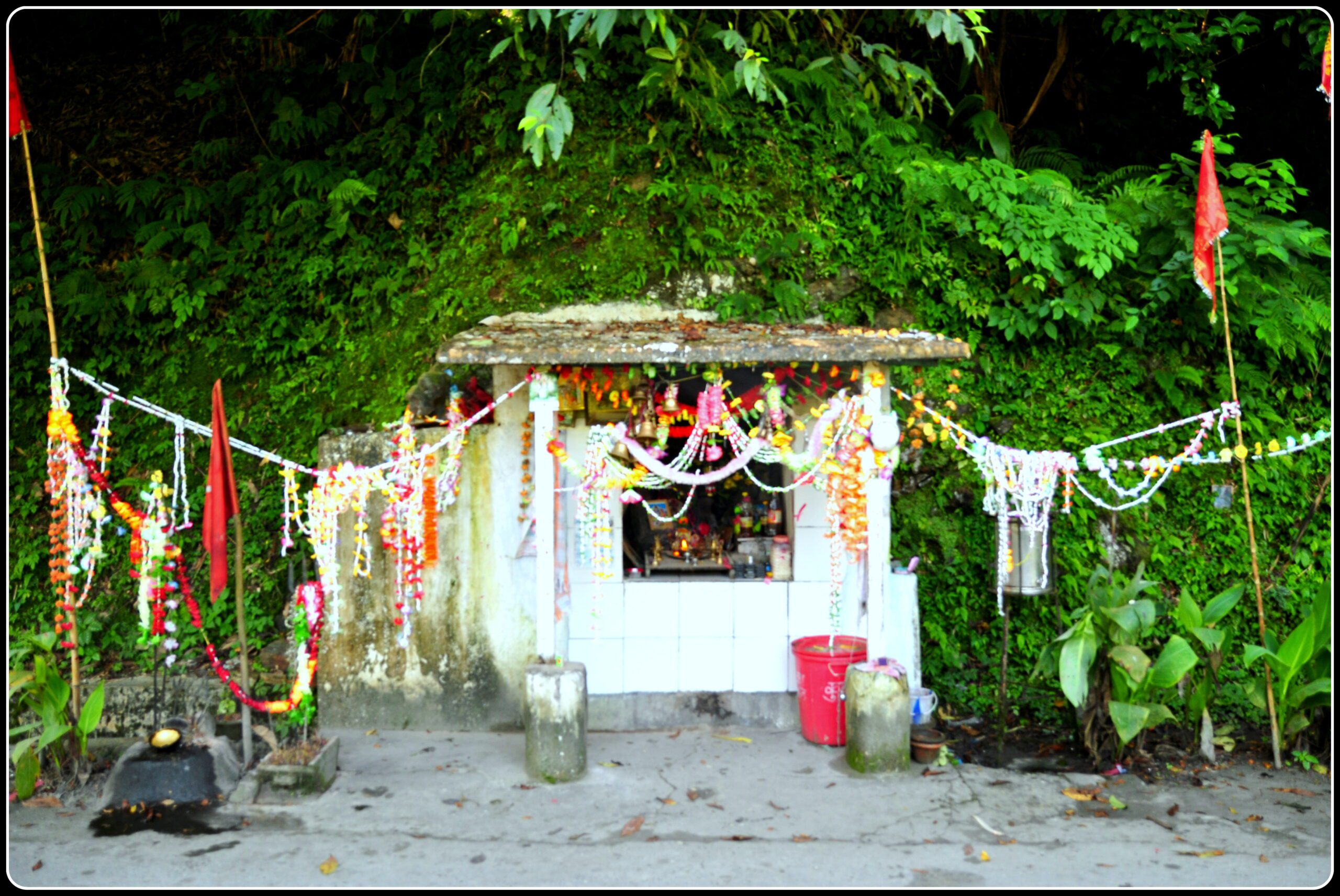
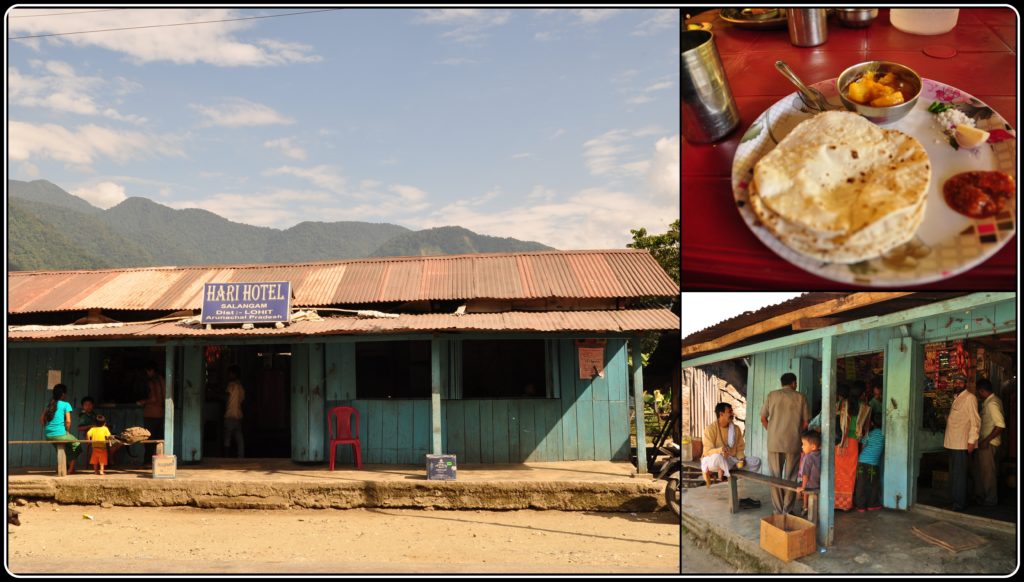
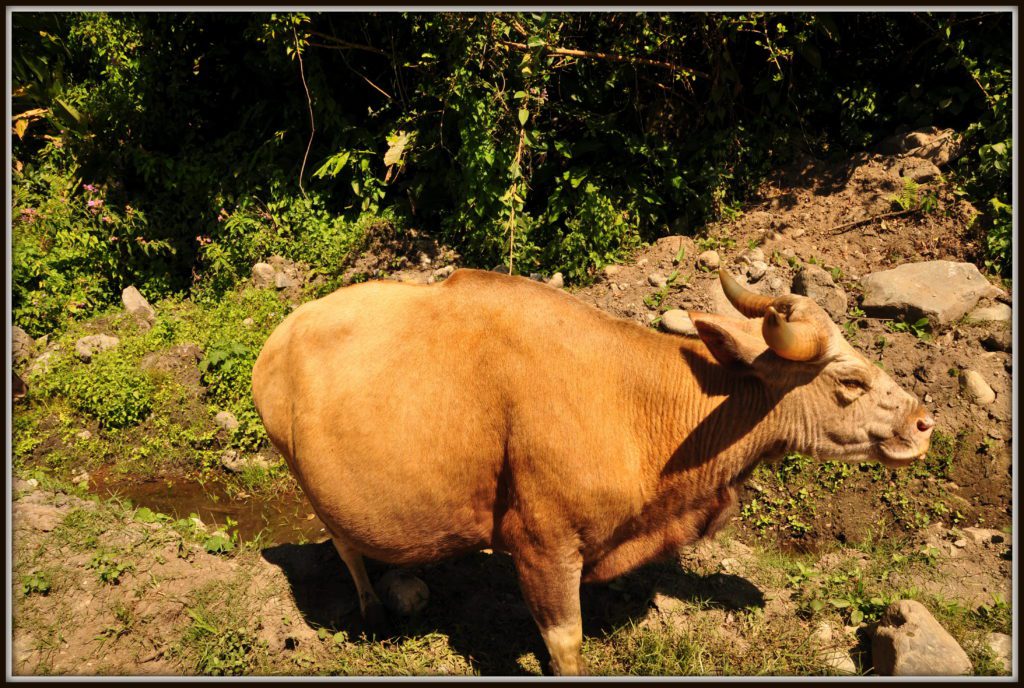
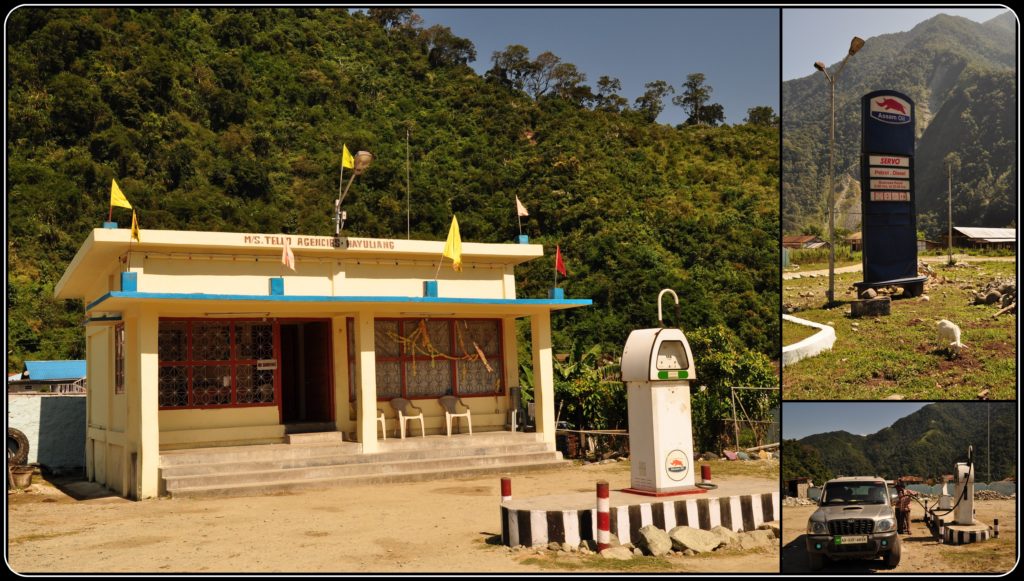
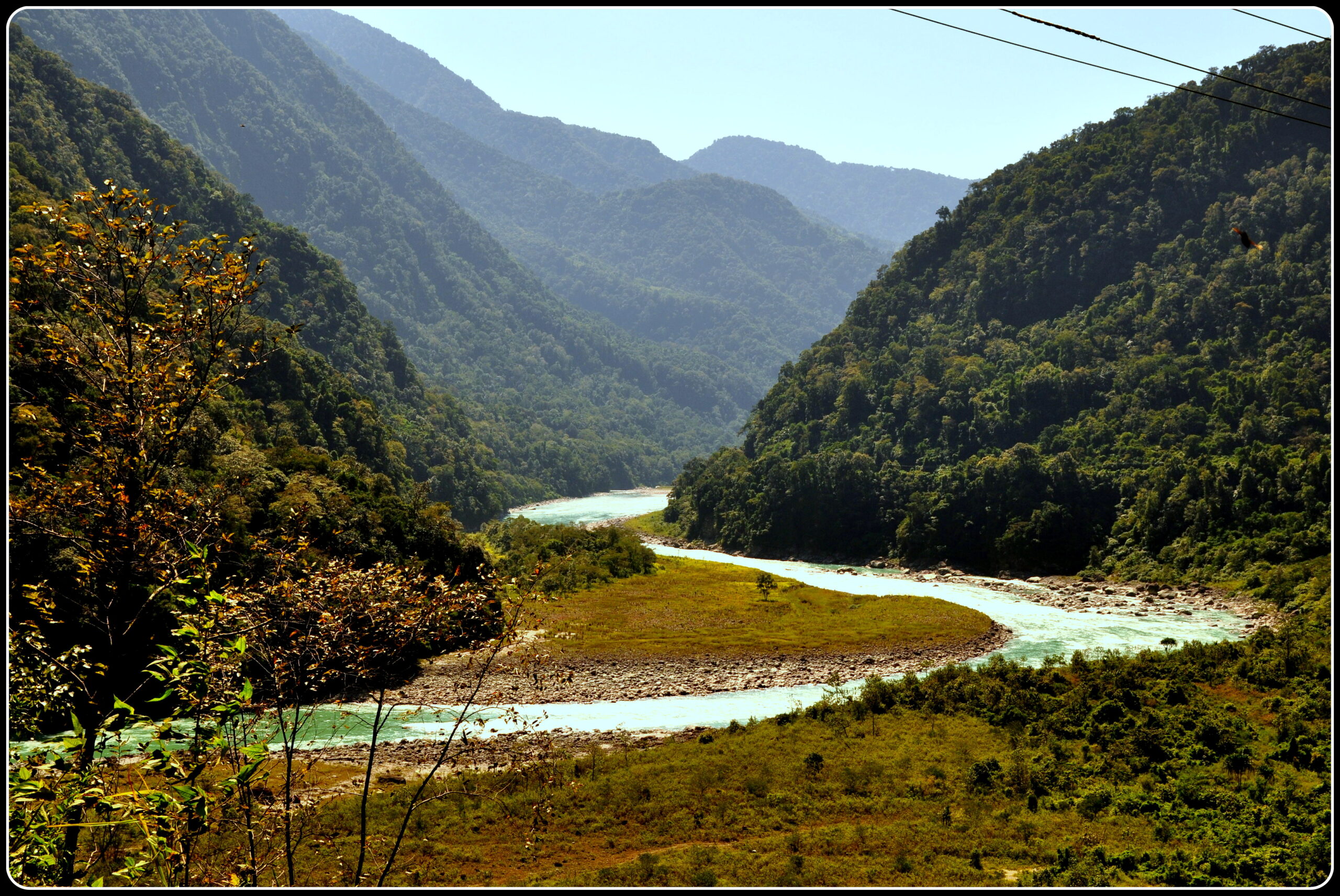
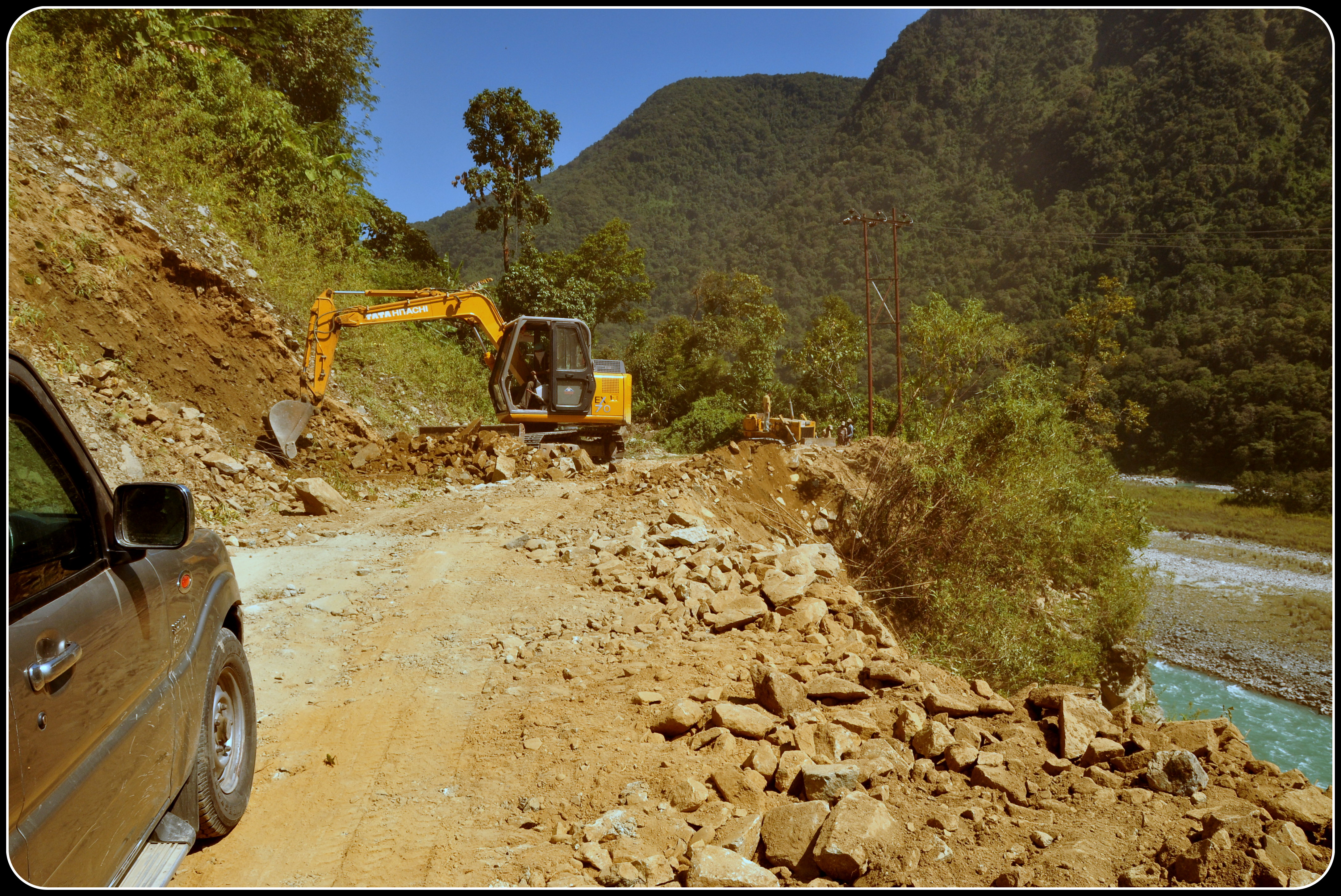
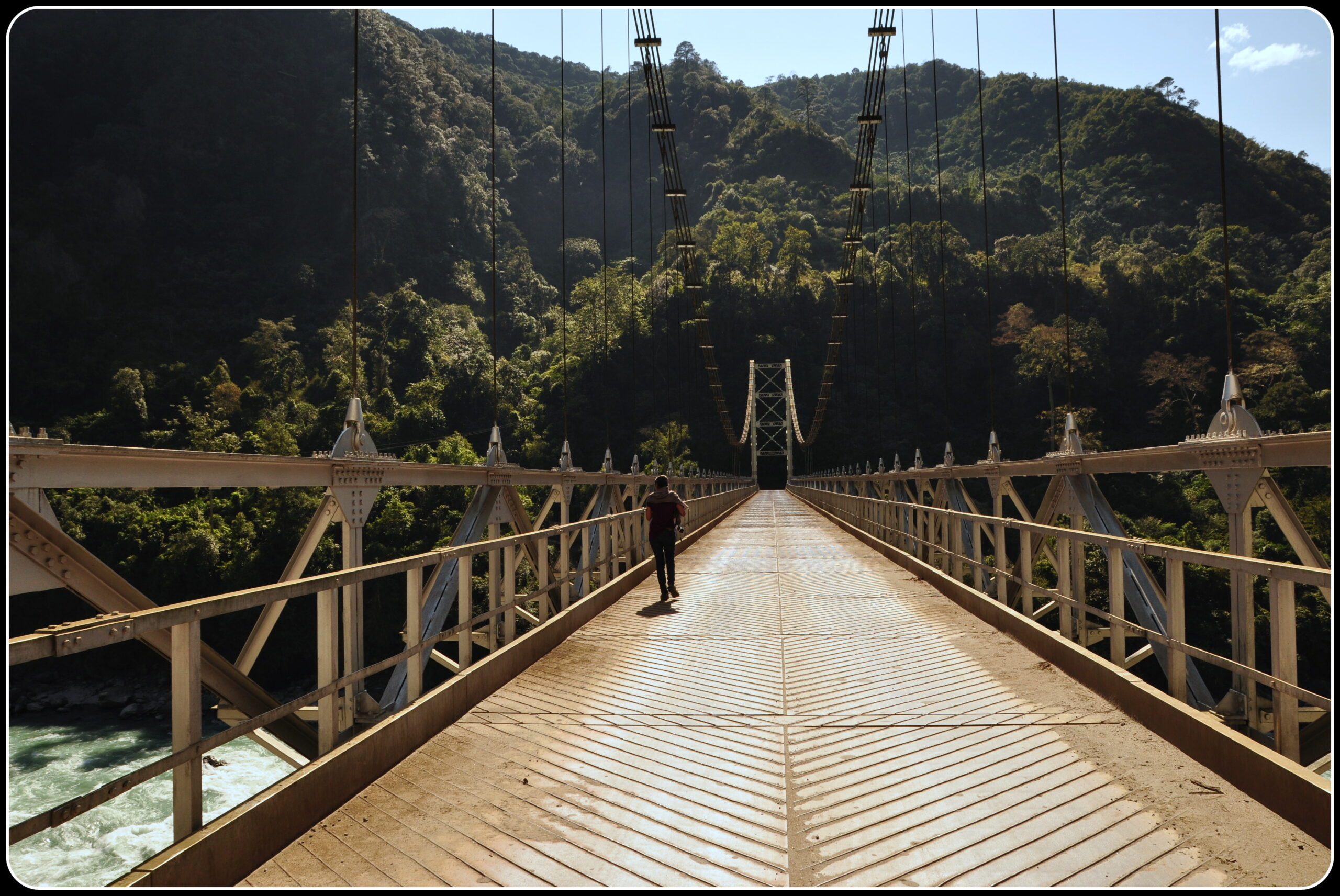
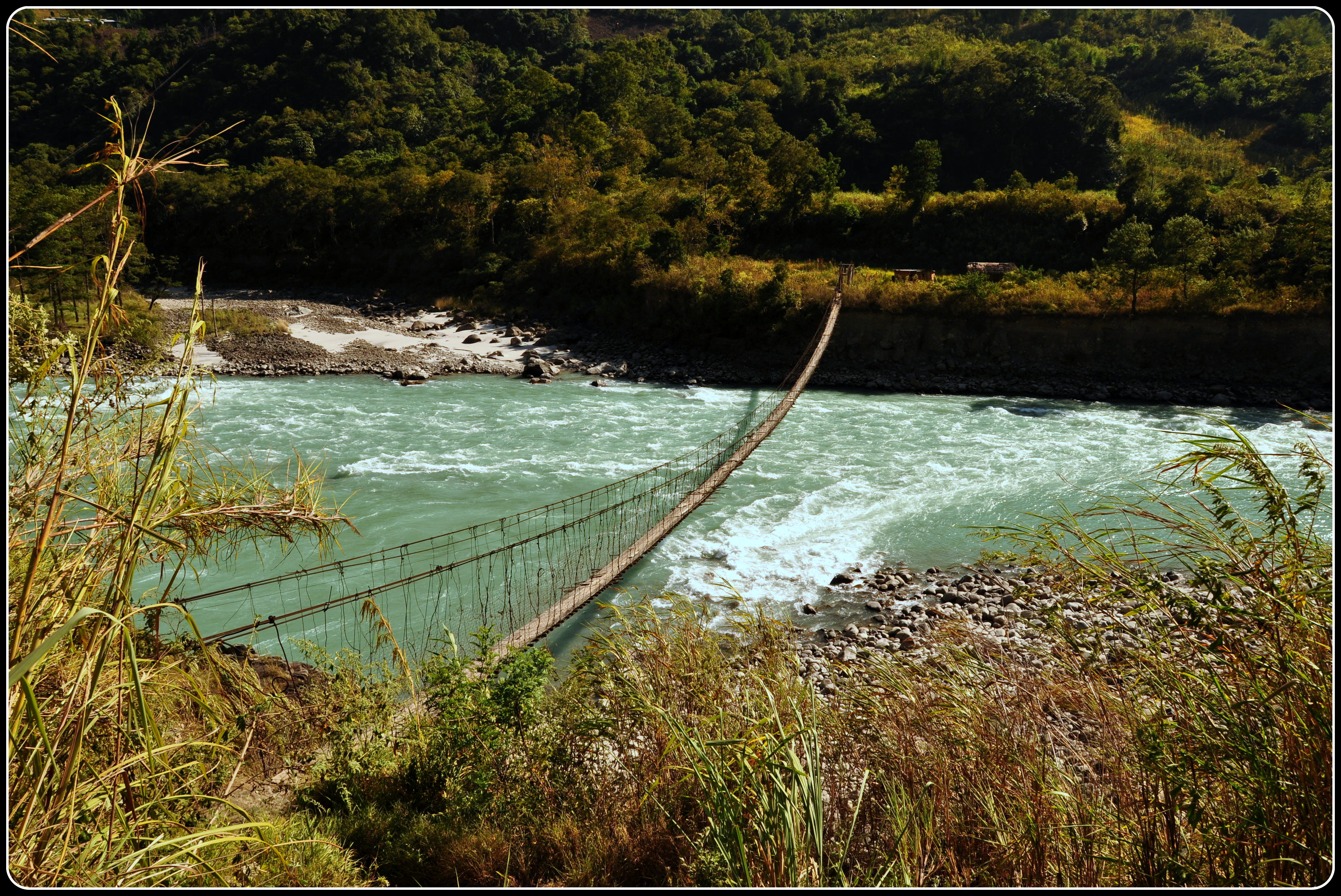
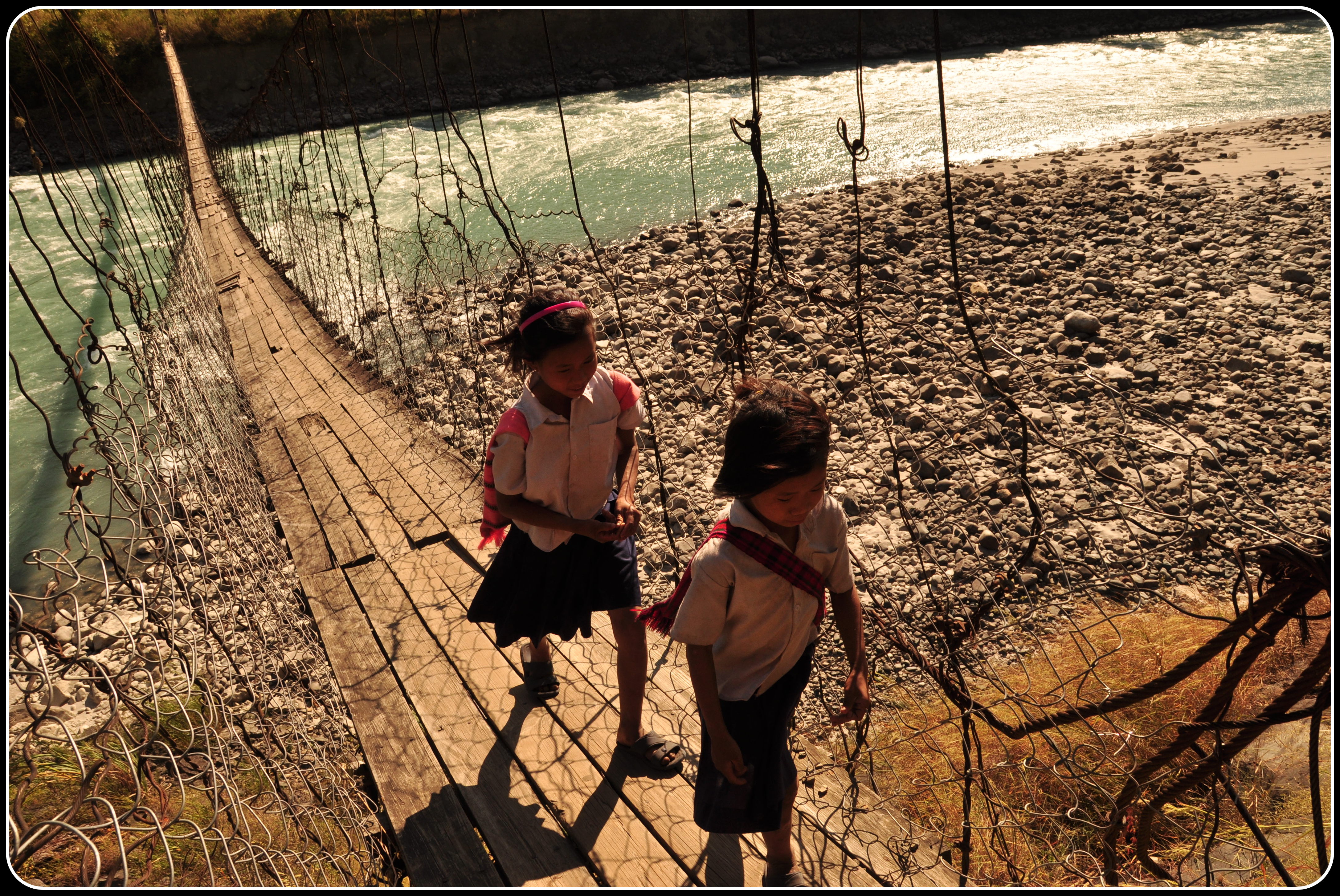
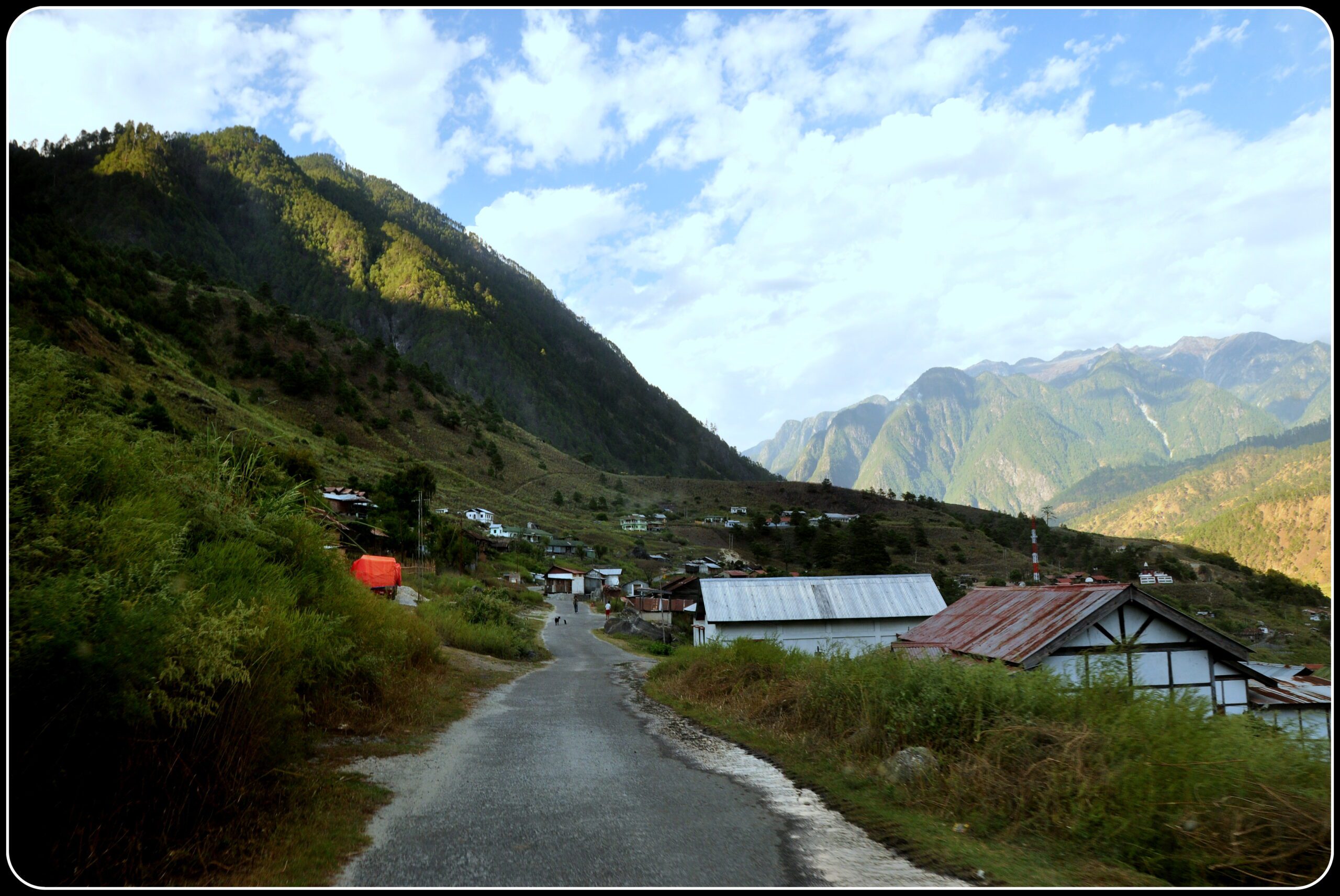
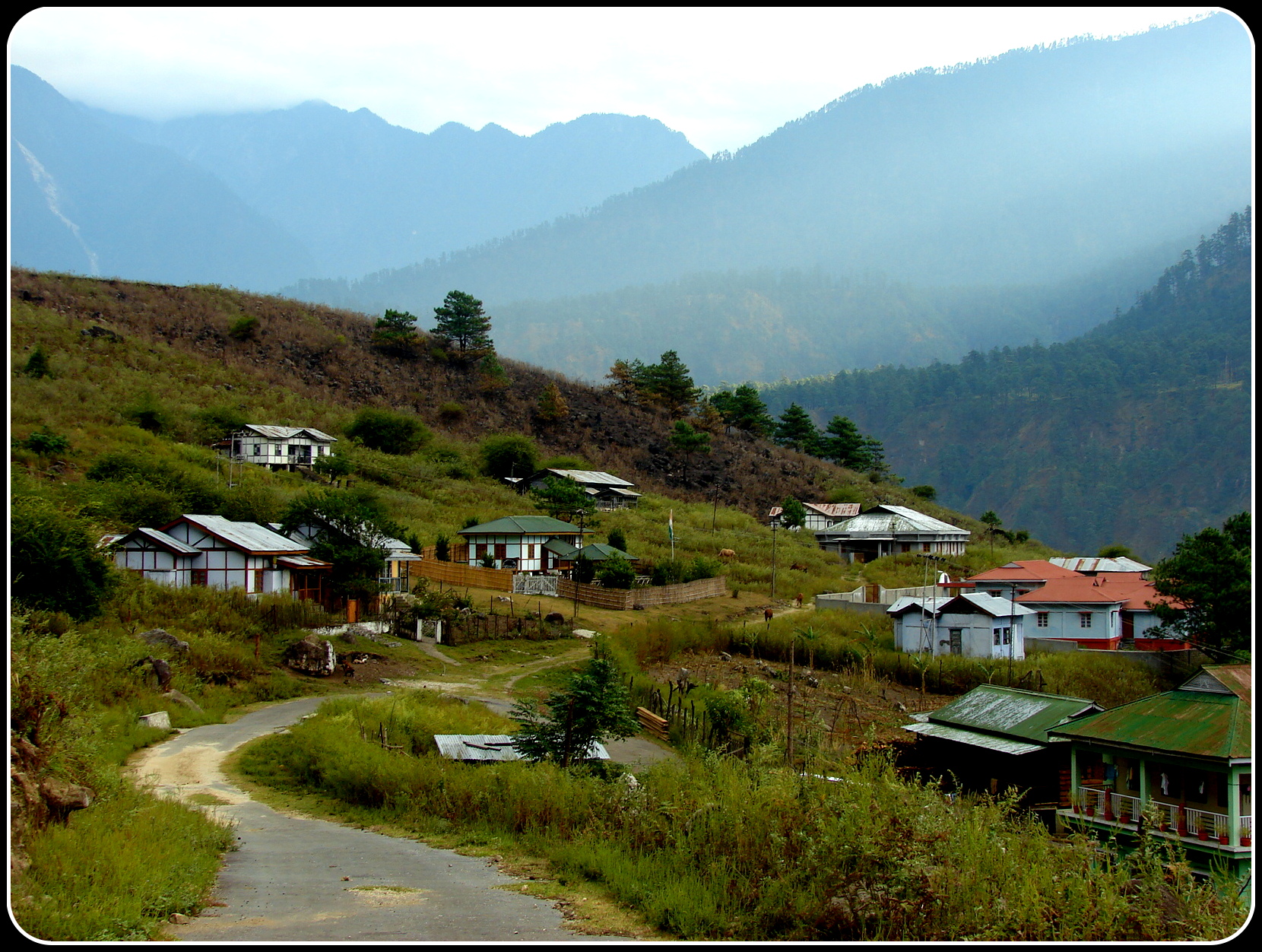
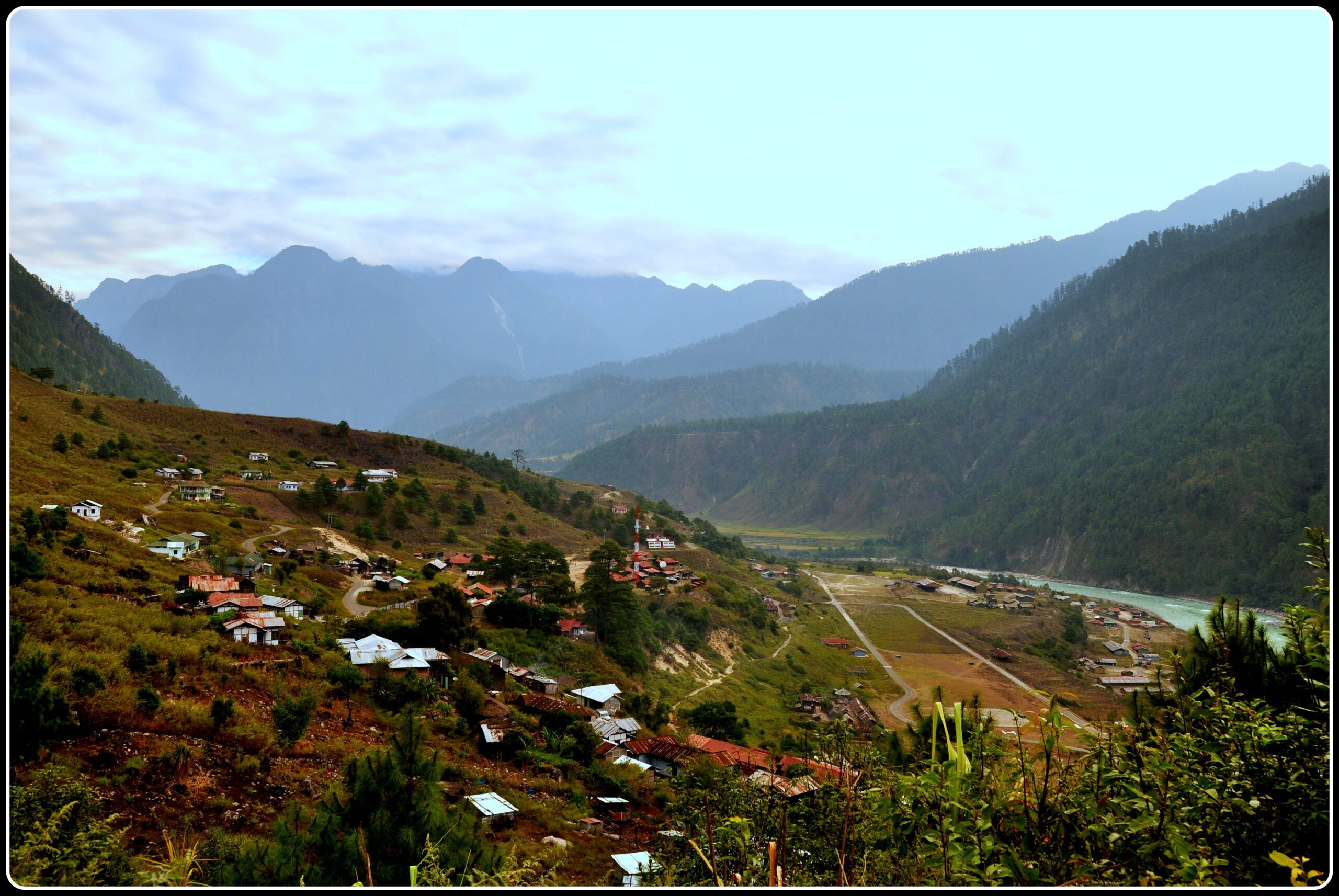
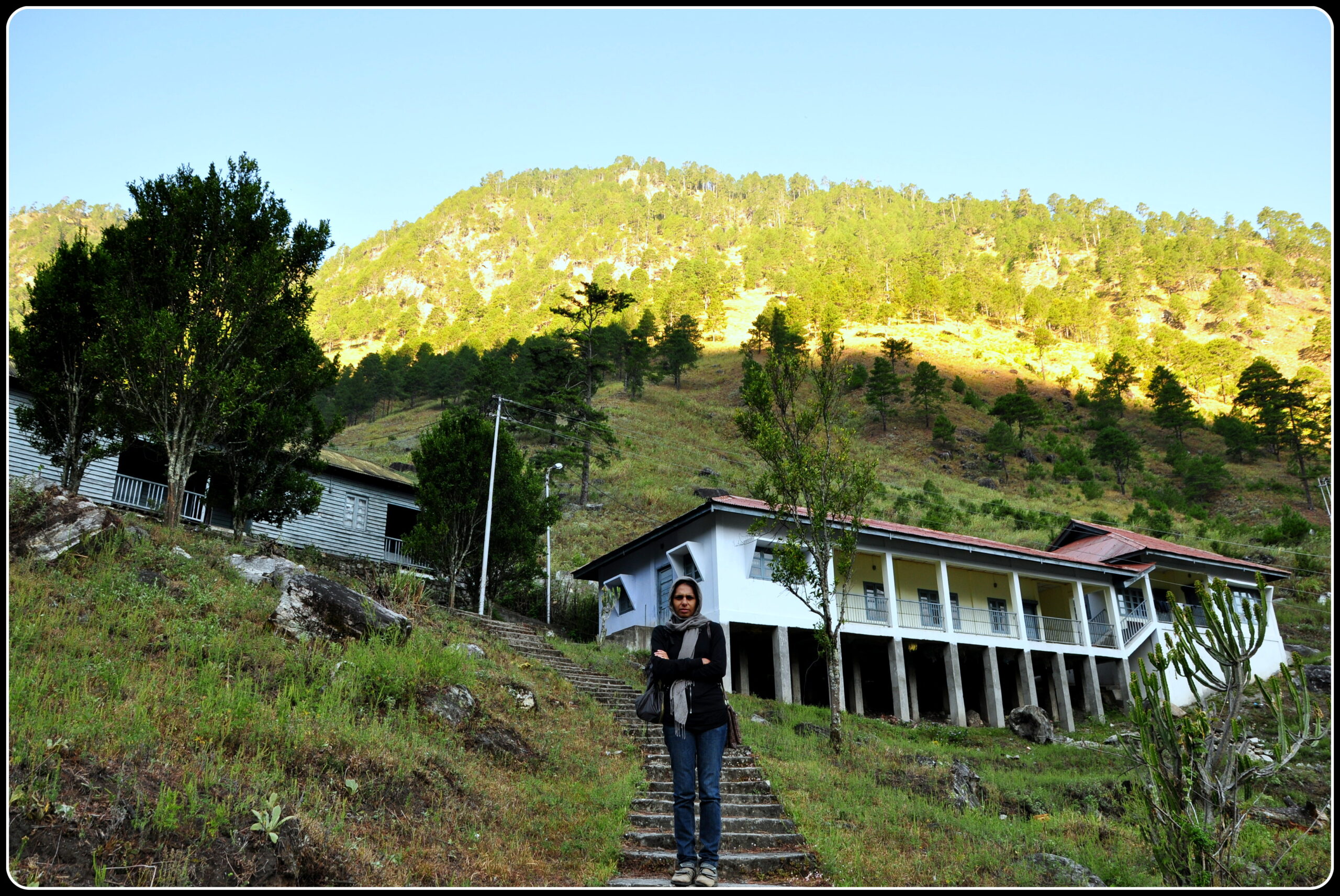
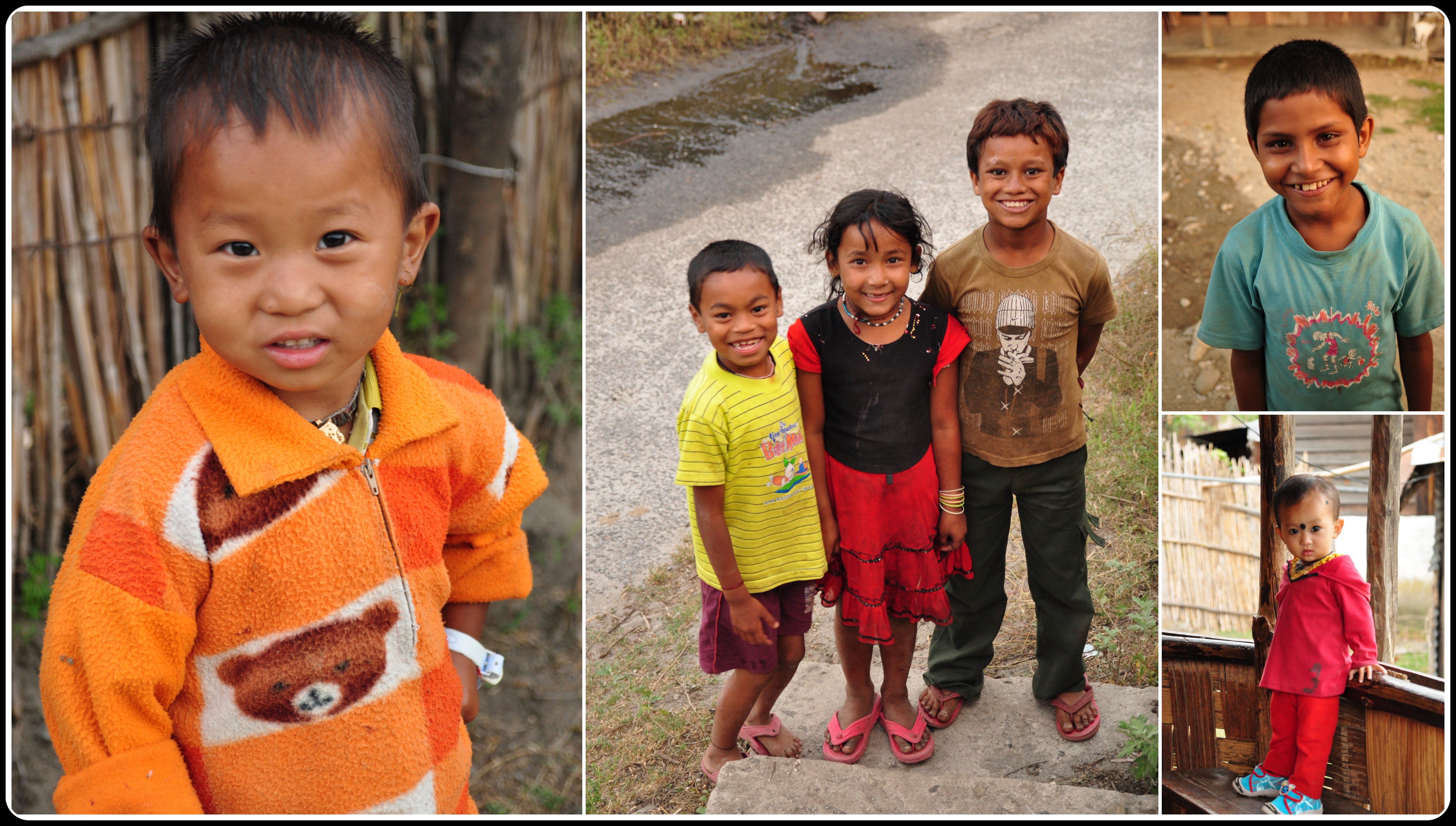


39 Comments
Wow, what an awesome and adventurous trip you have had Malini 🙂
Superb clicks each one of them. Reminded me of my trip to Gangtok and Lachung 🙂
Waiting for more pics like these 🙂
Regards
Jay
http://road-to-sanitarium.blogspot.in/
Thanks Jay for the comments. And an adventurous trip it was. Never been to Sikkim, but planning one soon :).
Loved the trip! Cant believe it has been a year… your narrative is so fresh and flowing. I know I am being repetitive, but Thanks once again for taking me along the wonderful trip!!! Loved every moment of it.
Thanks Nisha. Its hard to believe that it has been a year. Last year on the 12 of October we were on our way to Walong. Enjoying the mountain breeze, swinging on the hanging bridges and meeting all those wonderful people. How I miss it all. I guess its time for another road trip :).
Wow!! Love such far flung places. Away from the maddening crowd.
Brilliant narration and photography. Great post Malini. Looking forward to more such stories.
http://www.rajniranjandas.blogspot.com
Thanks Niranjan. Don’t those far flung places get us all charged up, wanting for more? I’m looking forward too, for more such travels.
chanaagithe … phewwww! All jealous about you Malini edathy. How much I miss travelling.:( And I can feel, Lohit is like Bharathapuzha for Kerala.
Dhanyavadagalu (and I didn’t look that up in the dictionary). Looking back on the journey, I feel a bit jealous of myself and I want to be on the road again.
You are right, Lohit is a lot like Bharathapuzha. The beautiful white sand beds (lie denuded due to illegal mining), the larger channels (now barely trickle along the way due to global warming), but still Lohit is their life line as is our own Nila.
You write well. Simple and clean descriptions. Evocative too.
I had only read about this place before in “The Himalayan Blunder” which was an account of the ’62 war by Brig. Dalvi who fought in it. There’s a lot of history to this place!
Thank you Kunal.
Before visiting Arunachal I had very little knowledge about the 1962 war. It was painful to know some of the details, firsthand. Though part of India, it is so shameful that a lot of us barely know anything about Arunachal Pradesh. And as you said there is so much history to this place.
It was a pleasue visiting Walong through your post.Thanks for the wonderful narration. Waiting for more!
Thanks Thomas for travelling along. Game for another 🙂 !
Your article caught my eyes as a dream..!
Its really stunning and now eager to read your next journey.
I hope, you travelled upto Kibithu.
I am a journalist, a trekker, fond of nature and especially of Himalaya.
I had been to many places (not typical tourist spots) from Kishtwad in Kashmir or Sangla in Himachal to places like Cherrapunji (for Living Root bridge) in NE, but only to Tawang in Arunachal pradesh. I wish to visit Walong, Kibithu – along Lohit river on the occasion of 50 years of India- China war.
I have already postponed once my trip due to heavy rains and flood in Arunachal Pradesh.
I read many books on India- China war in last 3 decades. It’s very painfull but we are fortunate also that Chinese withdrew from almost all parts of Arunachal Pradesh in November 1962.
The Lohit valley is ‘silent’ now for last 50 years,but will it remain forever?
I wish to contact people who actually witnessed the war in 1962, as simple, common man. For them the war was as a puzzle.
They even worked as porters to Chinese, as they were doing for Indian Army. I learnt it while visiting Tawang.
True, Walong will never fall again but the scars still remains.
I think, its our- every Indian’s- duty to win their minds and give healing touch, so they won’t feel hurt.
Wish all the best to your future journey.
p.s. – have you ever been to Ledo road, Jairampur, ‘Lake of no return’ and ‘Pangsau festival’? Its an occasion to cross India-Burma border on this historic WWII road. It is in January 2013. Worth experiencing.
Thanks Alhad for that long comment. This must be one of the longest comments I have ever received. It is good to meet somebody, ‘virtually’, that has the same eagerness we share in travel (to those undiscovered gems), nature and the Himalayas.
Arunachal Pradesh was a dream. And we were very lucky to make it there. And there are so many facts about the war that nobody knows. I was so ashamed of myself to learn about so many things about the war only after reaching Walong. I hope your interest in how the war affected the common man leads you to come up with a feature/book. Yes, I have read a little about the war. Some working as porters, I read about somebody who worked for the Indian army as a mass grave digger. Just imagine that.
We did make it Kaho and Kibithu. And we have been to Ledo (Stillwell) Road, Jairampur and till the Burmese border. Couldnt make it to the Pangasau Village or Lake of No Return. Well, There is always next time, I guess.
Himalayan Blunder – Brigadier Dalvi
India’s China War – Neville Maxwell (this one was banned in India for quite some time, its now available)
Both are good reads. One from the perspective of an Indian army brigadier. The other from a Britisher who gives a great perspective of the events much before the war even happened.
Thank you Kunal for that information. I guess the new generation should be aware of the real facts of the war from all perspectives. Will definitely have a copy on my desk very soon.
Ma, as earlier, your writing flows smooth, reminding me of Pearl Buck’s narration of Chinese life…. Waiting to read the second part……..
Its the time now for all Indians to pay our tribute to the great heroes of Battle of Walong, but the severe floods and rains of Sept 2012 have washed out large sections of the road between Salangam and Hawai bridge point. 48 BRTF teams under their spirited Commander, are working day and night to restore the same, so that many more keen Indians can pay their tribute…..
Uncle Moosa
Bumped into your log about Walong and Kibithoo while searching for information about these places. It was really enticing and We are planning to visit Kibithoo in the coming week and was bit worried about staying options as Kibithu doesn’t seem to have any (and probably not allowed too). But Walong seems to be a good option. So if you don’t mind can you please share how you’ve got to stay in the circuit house? Any special permission is required for that? Any help in this regard will be really really useful for us. We are two persons (indians) traveling the country in our own (Self driven) vehicle. Driven thru Bangalore-Pune-Gujarat-Rajasthan-Punjab-Himachal-Delhi-UP-Bihar-North WB and we’ve reached the NE. Planning to enter Arunachal at the eastern part and then will travel to other parts of NE.
I really envy you now, your travel plan is really enticing (more than my blog of sure).
As you said I do not think there are any staying options at Kibithu. And Walong is the best option. Unlike the rest of Arunachal, there are hardly any hotels or resorts in Lohit and Anjaw districts beyond Tezu. The only accommodation options are the Circuit houses in Walong and Hawai. These have to be booked in advance by contacting the DC’s office in Tezu. Tel# 03804-222318.
All Circuit Houses are technically under DC Anjaw, whose office is still a part of the DC office
Tezu. One can also ring up the DC Lohit’s PA : 03804- 223666 / 224485 Fax: 03804- 22540 /
OR the DC Anjaw PA: 03804 – 222 223.
There is also a Circuit house at Khupa, 4 km short of Huyuliang.
For booking contact DC Anjaw / ADC Hayuliang ( tel: 03805- 276201)
Actually we were very lucky, because our uncle stays in Arunachal and many of his students are placed in some of the DC offices across Arunachal. We got our ILP’s and accommodation without any problem.
I’m sure you may be aware of this but still -> For Walong, ILPs would be needed from both Lohit and Anjaw districts. ILPs can be obtained from the Arunachal Pradesh Govt.’s Residence Commissioner’s office in Delhi, Kolkata, Guwahati, Dibrugarh and other towns where there is a Liaison Officer.
Any Indian citizen need only one permit for Lohit (Dirak Gate while coming from Tinsukia and Sunpura while coming from Sadia/ Chapakhowa ( all in Assam) . They can freely visit Anjaw too.
Hope this was of some help.
Good job Ma’am.
Surely it would have been a tough visit because I know the whole route and area very well. It is a very nice place, but remote and having very poor road connectivity. I am here since the last 3 years, but nothing has changed in these three years and the road condition has worsened.
Leave that. You have done a great work, hats off for lady!!!!!!!!!!!!!!!!
Thanks Naveen for the comments. Our trip was made a lot more easier easy by many of our friends and well wishers. Moreover the climate was favourable and we were very lucky not to face the natures fury. Said that, a lot of places in Arunachal are too hard to reach due to the long distances, winding mountain roads and lack of public transport. I hope everything gets better by the time we visit the next time.
Very iteresting,very informative,educating.The way of narration is commendable.I am keen follower of wars,while doing so i came across the Walong,kibithoo,kaho.Our soldiers hold these places for almost one month (18 Oct-16 Nov,1962)without any help from outside under utter confusion & turmoil.6 Kumaon,4 th Sikhs,3 Gurkha & 4 th Dogras faught till last bullet,Last breath.
As Brigadier N.C. Rawlley said, “6th Kumaon at Tri Junction fought and fought and fought till there was nothing left. After this there was eerie silence.”
Hats off to these unsung Heroes.You are dam lucky to be at such sacred place.Soon I shall be there to pay my tribute & homage to our real Heros.Good luck to you.Pls keep posting.
vimalsingha@yahoo.com
Thanks for stopping by and for that inspiring comment. To be frank, before the journey to Walong/Kaho/Kibithoo, I had very little information about the war, as a matter of fact about any of the infiltration done by the Chinese on the north east frontier. This journey was an eye opener.
I cannot describe that feeling I had when I stood in front of the war memorial. More people should know about our unsung heroes – the very reason we are having a peaceful sleep at night.
Just bumped into your blog while wanting to know the national parks along the river lohit, if there is any, and read the blog just to know what those beautiful pics were all about. Its really an interesting read. I will also visit those places one day, either alone or with friends but for now i m preparing for some ‘big’ exams so everything else is in the backseat for a while. Anyways, thanks ma’m for sharing your travelling experience. Good luck for new roads, new trips, new worlds.
Thanks Sajjad for stopping by. Good luck for your ‘big’ exams. And you can visit the rivers, forests and those winding roads when the wild calls. Hope that happens soon.
hi,
Thanks for posting this !!!!, have dream to visit Walong. Could you please guide how to reach there? or any Localaid ?.
Thanks
sakpalss@rediffmail.com
Thanks Suneel. Many of the places in Arunachal are too hard to reach due to the long distances, mountain roads and lack of public transport. Actually we were very lucky, because our uncle, who is a teacher, lives in Arunachal. Unlike the rest of Arunachal, there are hardly any hotels or resorts in Lohit and Anjaw districts. The only accommodation options are the Circuit houses. I’ll write to you in detail about how to go about it.
Can I get the phone number of the circuit house of walong? If possible please email me asap.
How to book Circuit house of Walong? Do you recall any phone nl of cicuit house..
Thanks
Kuntal
8800097815
kuntal_mukhopadhyay@yahoo.co.in
Hi Kuntal
Will send you a mail with details.
where else have u been to ? give us something like this.
My blogs have a few write ups on the places I’ve visited. A few posts are coming up soon.
i saw the all photo very nice place can to tell me how to go kibitho.
Pranjal, there are no private buses to Kibithu. The only transport available would be private cabs, or shared jeeps and wingers which are availablr ftom Tezu and Wakro.
Thanks for the excellent narration. You made me travelling all along ! In my childhood – I was taught “A picture is worth thousand words”. After reading your travelogue, I realized that the reverse is also true, and can say ” Hundred words make a perfect picture”. As I was born in Arunachal Pradesh, had the aroma of the land and the sound of silence always with me and could relate myself with school going kids you had talked about. Please keep writing and shall follow your blog. …God bless and thanks again.
Thanks Dhiman for the comments and for inspiring me to write better. To evoke and transfer the same feelings I had experienced when I had visited the place to anyone who reads my post is what makes me genuinely happy. Thanks
Hi .. Please mail me the Phone no. of Walong Circuit House…and also kindly inform is there any accommodation available in Kibithu…
munphukan@gmail.com
Hello..Please do me a favor by mailing me the Phone no. of Walong Circuit House or Hawai…
Partha Protim Hazarika
jun_hazarika@yahoo.co.in
Sent details to your mail.